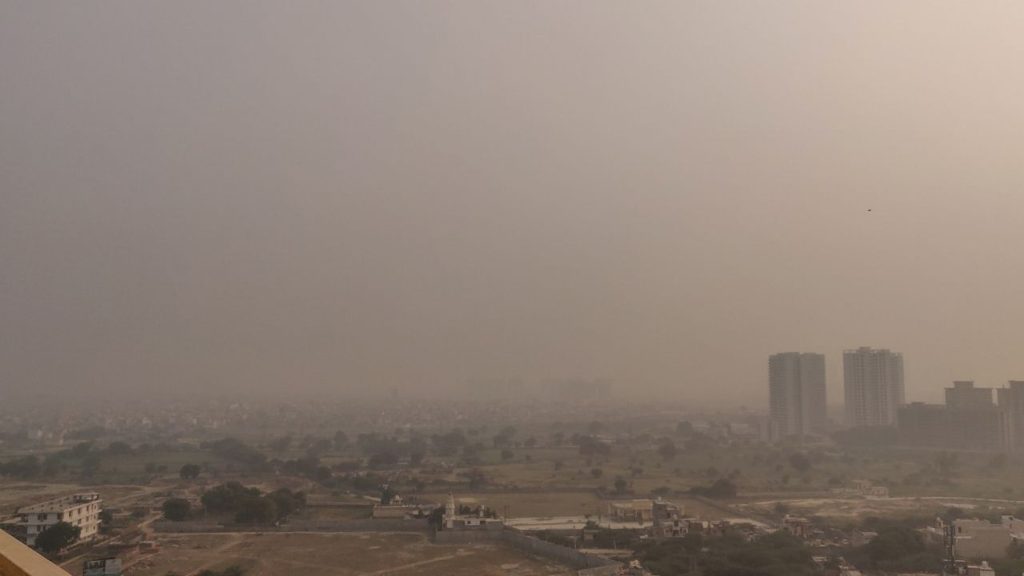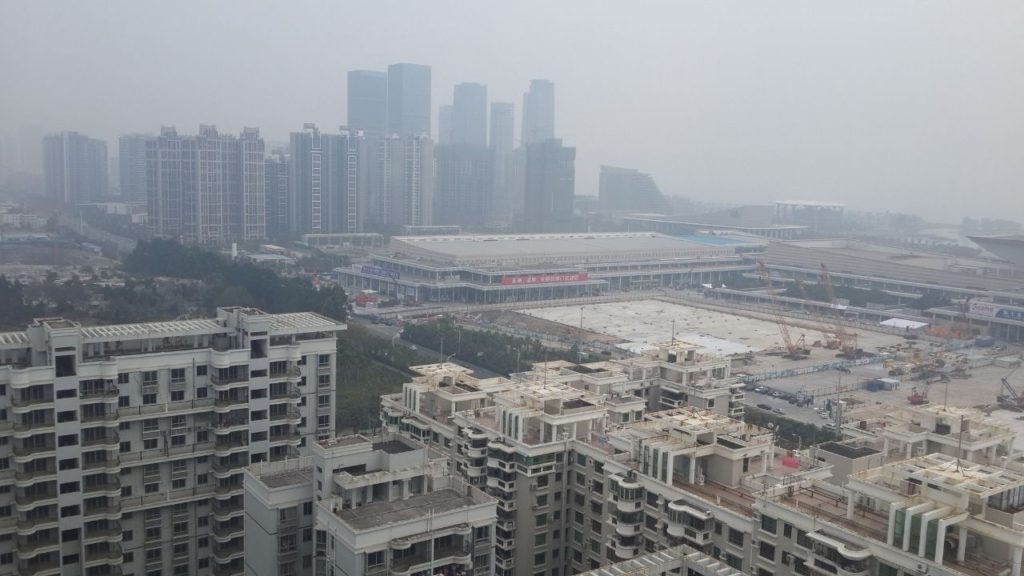The air quality index (AQI) is a daily reporting index for air quality. According to the recently released IQAir AirVisual 2020 World Air Quality Report, India is home to 15 of the world’s 20 most polluted cities. Would you believe it if I say that a public emergency was declared after the air quality index in Delhi plunged to ‘severe plus’ levels of about 530? Read on to find more about the Delhi Air Quality Index and what were the causes of this extreme level of pollution. To understand the severity of air pollution in Delhi, we should first know about Air Quality Index and its categories. So let’s look into the details of AQI and its categories.
Air Quality Index
The air quality index (AQI) is a daily reporting index for air quality. It’s an indicator of how air pollution impacts one’s health over a short period. The AQI’s objective is to inform individuals about how local air quality affects their health.
AQI disseminates the air quality information in real-time. It is necessary to be aware of daily levels of air pollution, especially for people who suffer from ailments related to exposure to air pollution. In case you wish to know more about air pollutants, please check out our blog, What are air pollutants? | Types, sources and effects of air pollution.
The AQI is calculated by the Environmental Protection Agency (EPA) for five primary air pollutants for which national air quality guidelines have been set to protect public health. They are listed below:
- Ground-level ozone
- Particulate matter (PM2.5/PM10)
- Carbon Monoxide
- Sulphur dioxide
- Nitrogen dioxide
The higher the Air Quality Index value, the more polluted the air is and the higher the health risks. For the past three decades, many developed countries has widely applied the principle of AQI.
Also Read : Air pollution Effects and Causes – A complete overview
How Air quality index (AQI) is calculated?
To report air quality, different countries use different point scales. For instance, the United States employs a 500-point scale, with a score of 0 to 50 deemed satisfactory. A rating of 301 to 500 is considered dangerous. India, too, uses the 500-point scale.
Everyday air pollution monitors record the major contaminants’ concentrations. EPA-developed standard equations are used to translate these raw values into a separate AQI value for each pollutant (ground-level ozone, particle pollution, carbon monoxide, and sulphur dioxide and nitrogen dioxide). The highest of these AQI values gives the the AQI value for that day
Categories of Air Quality Index
Depending on the level of pollutants in the air and the health effects it can cause, AQI has the following categories.
- Good (0 to 50) – Minimal Impact
- Satisfactory (51 to 100) – In sensitive people, this may cause slight breathing difficulties.
- Moderately Polluted (101 to 200) – May cause breathing difficulties in individuals with lung disorders such as asthma, as well as discomfort in persons with heart disease, children, and the elderly.
- Poor (201 to 300) – May cause breathing issues in persons exposed for an extended period, as well as discomfort in persons who have heart ailments.
- Very Poor (301–400) – May cause respiratory sickness in individuals exposed for an extended period. People with lung and heart issues may experience a stronger effect.
- Severe (401-500) – May cause breathing problems in healthy persons, as well as major health problems in persons who have lung or heart diseases. Difficulties can arise even when engaging in light physical activity.
- Severe Plus or Emergency ( Above 500 ) – Extremely high levels of air pollutants.
Goals of Air Quality Index
Let’s have a look at the objectives of calculating the Air Quality Index.
- Compare air quality conditions in various locations or cities.
- It also aids in the detection of incorrect standards and insufficient monitoring programmes.
- The Air Quality Index (AQI) helps to monitor the changes in air quality (improvement or degradation).
- The Air Quality Index (AQI) provides information to the public regarding environmental conditions. Therefore it’s particularly beneficial for persons who have ailments that are intensified or triggered by air pollution.
Who is most vulnerable to air pollution?
- People who suffer from lung disorders such as asthma, chronic bronchitis, and emphysema.
- Teenagers, as well as children
- People of all ages who exercise or work outdoor often
- Even individuals who are healthy can be sensitive to certain pollutants like ozone.
Now, we are done with the basic information about AQI. Keeping this in mind, lets analyze the AQI in Delhi.
Air Quality Index in Delhi
According to the AQI report, PM2.5 (particulate matter) is the most prevalent pollutant in Delhi and its outskirts, consistently exceeding the standard. It was the second most polluted city in India, barely behind the number one most polluted city, Ghaziabad, with an exceptionally high value of 110.2 g/m3 for PM2.5. In addition, Delhi came in the fifth rank out of every city in the world.
It received a PM2.5 reading of 98.6 g/m3 in 2019, placing it in the ‘unhealthy’ category of the US Air Quality Index. In other words, when a city’s air quality falls into the unhealthy category on a year-round basis, it indicates that significant health risks are present.
From May to October, the Air Quality Index in Delhi shows that the level of air pollution is moderate. However, the situation deteriorates after October. The US AQI rating, as well as values of PM10 and PM2.5, are at their worst in November, December and January. This is due to changes in weather and wind patterns and stubble burning. The average AQI in January ranges from very poor to severe.
For the past few years, the concentration of NO2 in the air ranges from high to critical as per the AQI values. Also, the pollution level of particulate matter (PM10) crosses the critical level every year.
Surprised about such drastic levels of pollutants? Well, I have the answer for how this had happened. Read on to find the main causes of air pollution in Delhi.

Air Pollution in Delhi – Causes
Following are the main causes which made Delhi the second most polluted city.
Stubble Burning
To begin with, agricultural stubble burning by farmers produces nearly 15% of Delhi’s air pollution during the winter months. Farmers in the neighbouring regions burn the stubble to clear land after the September harvest, which contributes to the poor air quality. This is accompanied by changes in the weather, such as lower wind speeds and less rain in the winter season. Thus the smog remains in the atmosphere persistently.
Topographical Factors
Due to its location as well as how the wind and its direction deposits pollutants in the air, Delhi is at a significant disadvantage in terms of topography. Winds blowing towards Delhi bring enormous volumes of smoke and particulates from neighbouring states as well.
When winter arrives, these winds typically die down, trapping the accumulated pollutants in Delhi’s atmosphere. This has a bigger impact on pollution levels than one might think. A 2019 estimate claims that dust brought in by the winds amounted to 21.5% of the entire pollution in Delhi.
Also read : Air Pollution Meteorology and Plume Types
Construction Activities and Vehicular Emissions
In addition, construction activities contribute significantly to the city’s pollution burden. According to the Delhi Pollution Control Committee, dust from construction sites is responsible for 30% of air pollution in the city. A large number of cars in the city, many of which have problematic engines, emit massive amounts of smoke and haze. Thus, coating the city in soot and black carbon (BC). It is a form of carbon that is exceptionally hazardous to all living organisms.
Industrial Emissions
The industrial sector is responsible for an estimated 18.6% of total air pollution in Delhi. The industries alone release hundreds to thousands of tonnes of pollutants into the atmosphere each year. It should come as no surprise that PM2.5 levels have reached 829.2 g/m3. This was more than 80 times the WHO’s (World Health Organization) recommended yearly level.
If you are looking for alternatives to this problem, then the best place would be Air Pollution Control measures – Top 9 Air pollution control devices.
Now it’s time for some good news.
Conclusion
The National Green Tribunal is entrusted with delivering adequate and sustainable remedies in situations involving the protection of the environment, forest and pollution prevention. The Tribunal has authority over all civil matters involving significant environmental issues, including the implementation of any environmental legal right. It is playing a key role in bringing down pollution levels in Delhi.
The National Green Tribunal (NGT) ruled in 2015 that all diesel vehicles older than ten years will be prohibited from operating in Delhi-NCR. In 2017, the NGT issued an interim ban in Delhi on plastic bags having a thickness lesser than 50 microns. This was because they were causing animal deaths, blocking sewers, and polluting the environment.
Let’s hope that the National Green Tribunal along with the Delhi Pollution Control Board is able to bring positive changes in curbing Delhi’s air pollution. That’s it about Air Quality Index in Delhi. Let us know your opinions in the comments.





Comments are closed.